Halloween—also known as All Hallows Eve—conjures images of black cats, witches, monsters and ghouls. But the simple “creepy” reputation cast upon spiders does a disservice to the arachnid’s cunning abilities to capture prey.
George Washington University Ruth Weintraub Professor of Biology Gustavo Hormiga shared the complex methods that seven spiders use to trap their victims. Each image is accompanied by audio of Professor Hormiga describing the spider's characteristics and unique habits.
All photos are courtesy of Dr. Hormiga.
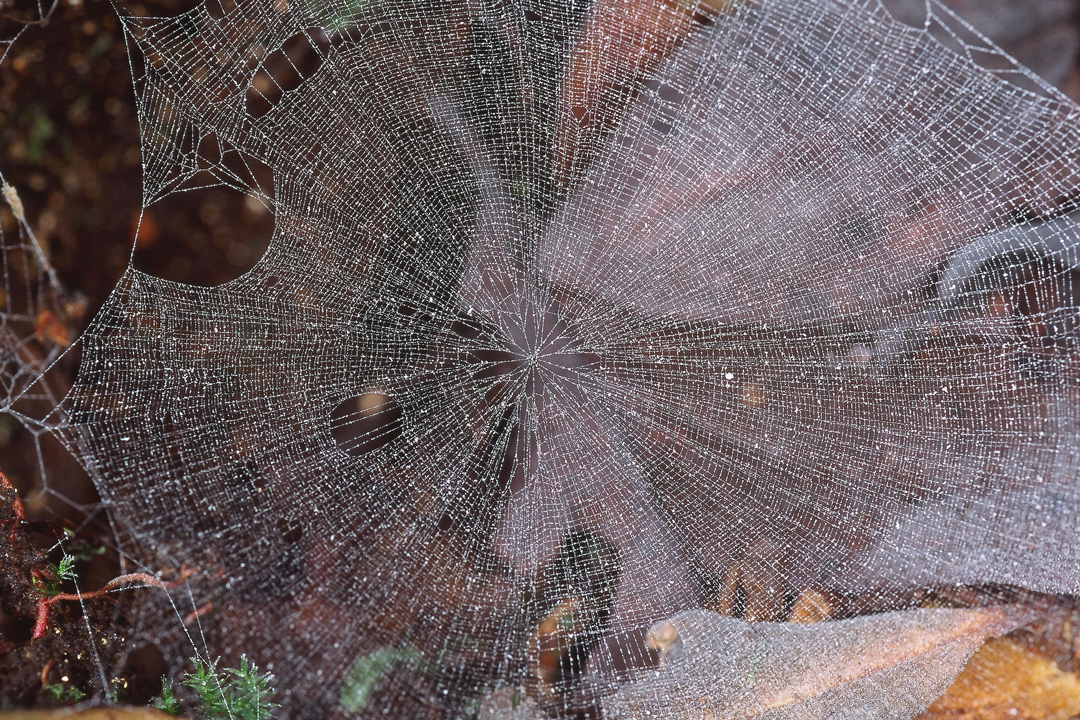
Symphytognathid spider Patu
This is the orb web of the symphytognathid spider Patu, photographed in the Dominican Republic. The web is about 4 centimeters in diameter, but this is enormous compared to the size of the spider that built it. Symphytognathids include the smallest known spider species, with the tiniest spider being Anapistula ataecina from Portugal, measuring less than half a millimeter. This web contains many radii and spiral turns, classic features of orb web architecture, to form a fine mesh. These webs are built on the forest floor in tropical and sub-tropical areas.
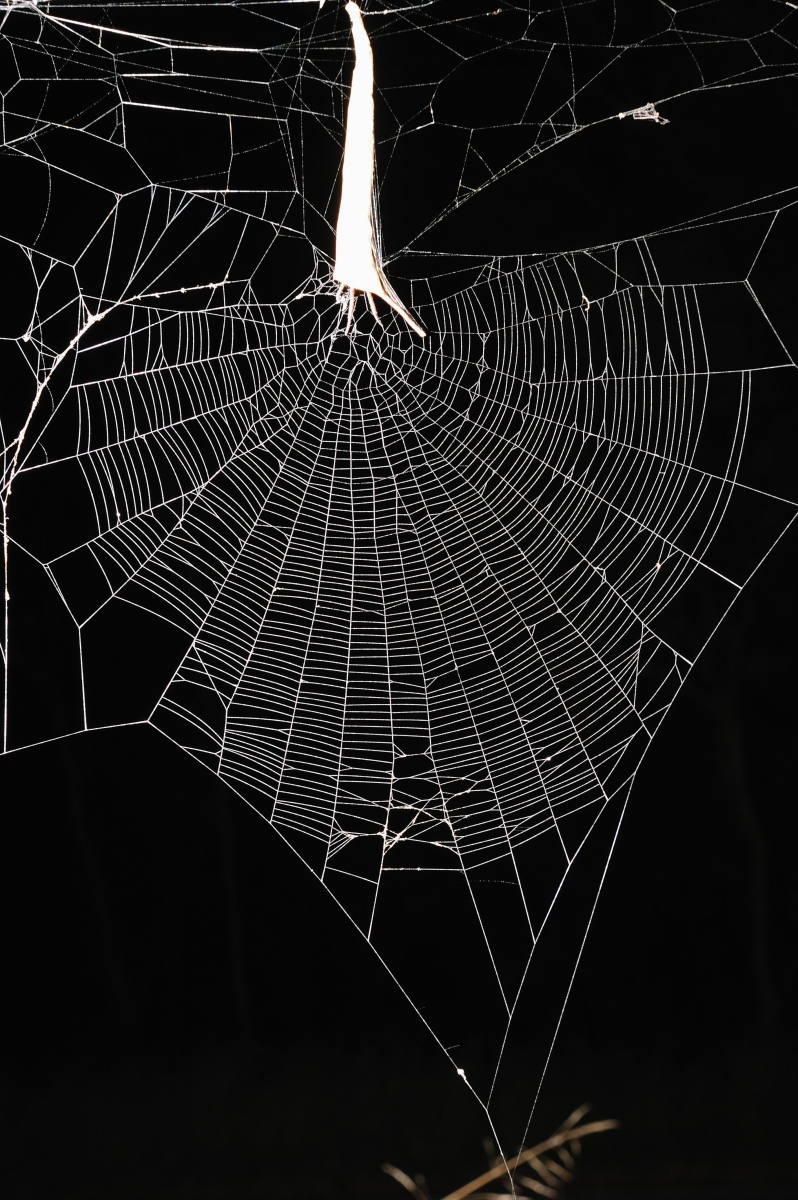
Phonognatha graeffei
This is the orb web of Phonognatha graeffei, a leaf-curling spider from Australia. Typical orb web architecture consists of a frame, radii and spiral turns, and in this case most of the turns are made from sticky silk. This type of silk is sticky in a gluey, chemical way, which is different from the fuzzy cribellate silk of Deinopis and other cribellate orb weavers. Orb weavers can use up to seven different types of silk with different chemical and physical properties.
Phonognatha webs are easy to identify because they pick up a leaf and curl it up to form a retreat in the hub of the web. Adult males and females will often share the retreat, which is unusual.
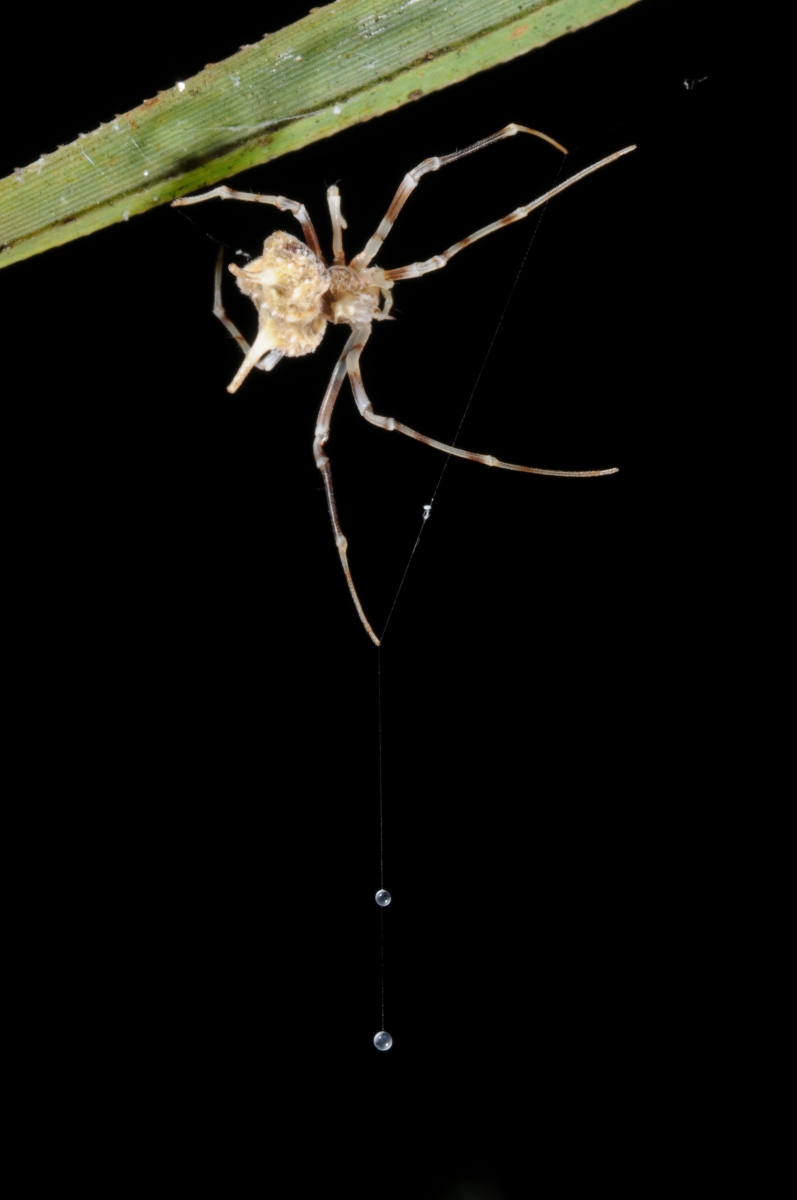
Exechocentrus lamcearius
Exechocentrus lancearius, a type of bolas spider, is a rare spider first described in the late 1800s. Only two adult specimens are known in the world. Found in Madagascar, this image captures the first time that Exechocentrus was photographed alive. At night the nocturnal bolas spider will build a single-stranded web with two gluey droplets. Bolas spiders attract male moths of certain species to the web by releasing pheromones similar to a female moth. The bolas spider waits in complete darkness, swinging the web around in circles until it catches a male moth. On average, bolas spiders capture two to three moths per night.
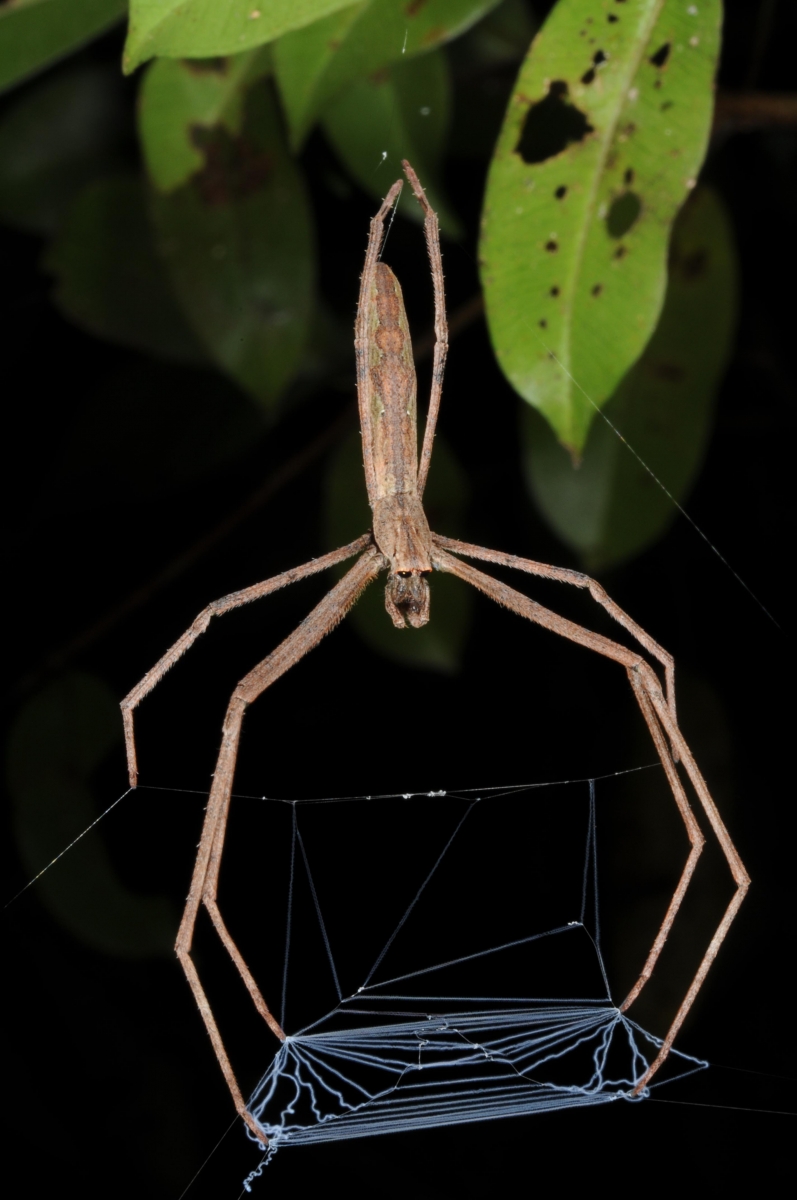
Deinopis
This is a species of Deinopis, a net-casting spider, photographed in Madagascar. These spiders create highly-modified orb webs, and this one is holding a foraging web with its first two pairs of legs. Deinopis spiders spin webs using a very ancient form of silk called cribellate silk, which it combs with tiny structures on its legs to give it the fuzzy appearance seen in this photo. During the day, Deinopis are stick mimics, stretching out flat to camouflage themselves among sticks and branches. At night, net-casting spiders catch prey that walk or fly near them by striking forward or backward with the foraging web.
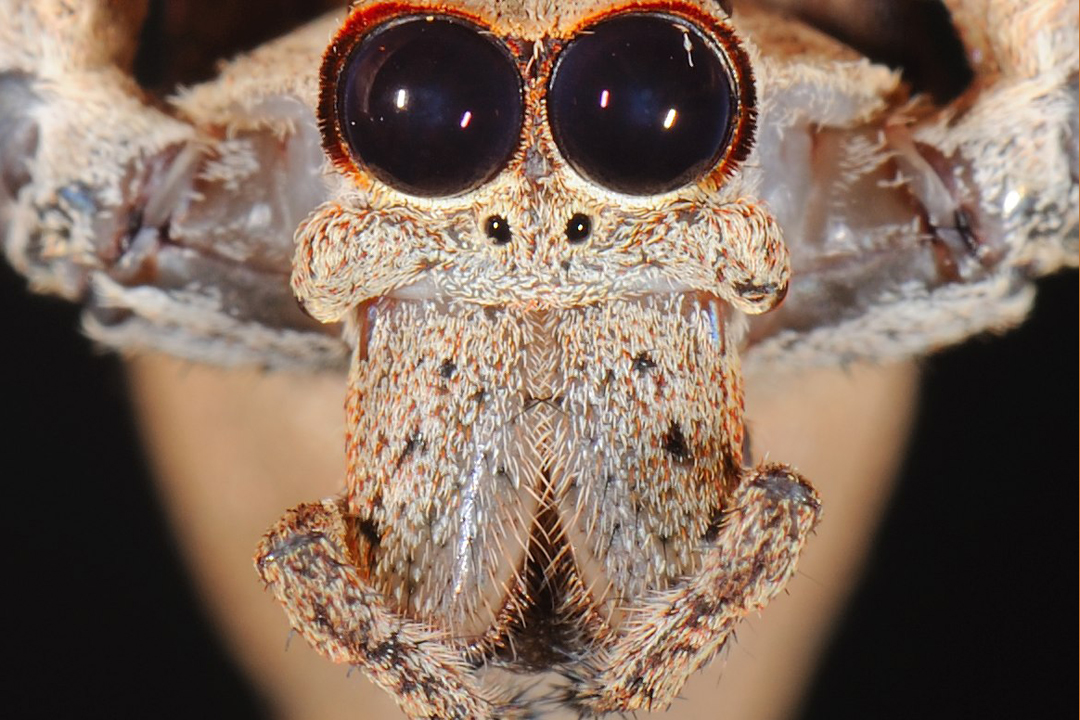
Deinopis
Deinopis, a net-casting spider from Australia, is also sometimes known as the ogre-faced spider. These spiders have four pairs of eyes, and this photo shows the largest set. Their eyes feature the largest single lens of any invertebrate and they are extremely efficient at gathering light in the dark. These Deinopis eyes are roughly 2,000 times better at capturing light than the human eye. In photography terms, human eyes have an f-number—or physical aperture and focal length— of about two. Animals with good night vision have lower f-numbers. Owl eyes have an f-number of 1.1, while Deinopis is 0.58—the lowest known f-number. This sensitivity comes at a cost—each day the cells that sense light within the eyes must be regenerated after the bright light of early morning destroys them.
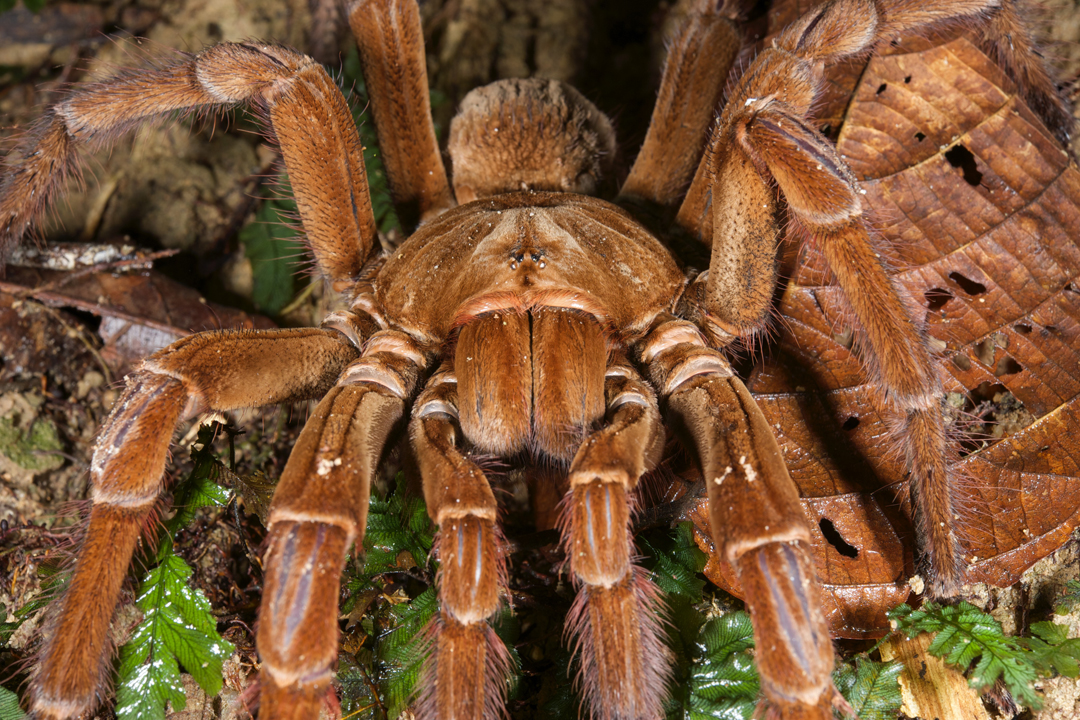
Theraphona blondi
This goliath tarantula, Theraphosa blondi, is native to northern South America and the largest known spider. It is roughly the size of a dinner plate, and can live up to 25 years in captivity. It is a nocturnal species that lives mostly on the ground, feeding on small animals including frogs and snakes. This spider was photographed in Brazil near the city of Manaus.
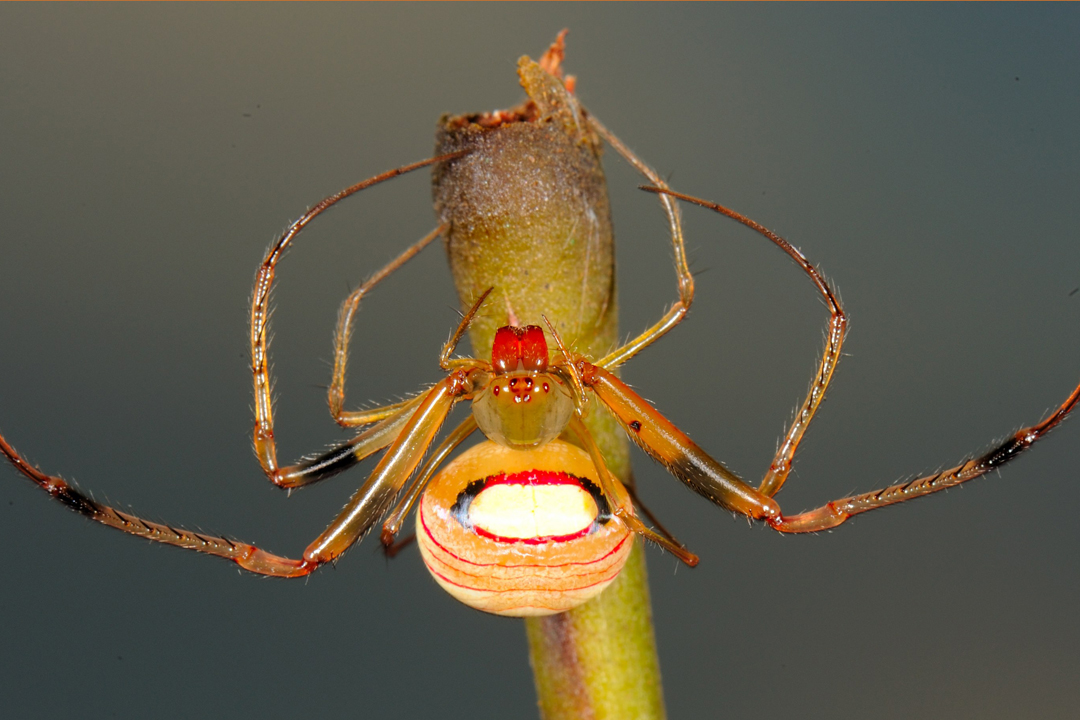
Gelanor latus
Gelanor latus, photographed near the Rio Negro, Brazil, is part of a family of spiders known as pirate spiders. These spiders have abandoned web building and will instead invade the webs of other spiders to prey on the host. Sometimes they also steal insects from their webs. Pirate spiders exhibit a behavior known as aggressive mimicry—they pretend to be prey caught in a web or imitate courting behaviors to lure the host spider out so it can attack and eat them. Long rows of modified spines on their front legs help them capture and handle their prey.


